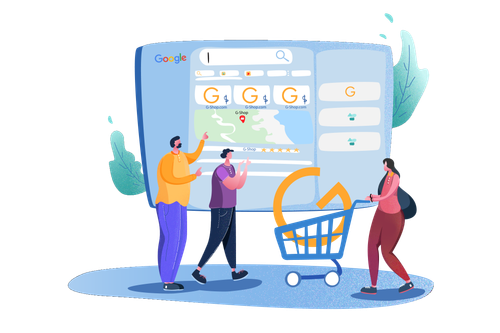GOOGLE ADS
Why is important Google ads for online marketing?
Google Ads is a powerful tool for online marketing for several reasons:
Table of Contents
Toggle- Targeted Reach: Google Ads allows you to target your ideal audience with laser precision. You can define demographics, interests, online behavior, and even keywords users search for. This ensures your ads reach people most likely to be interested in your product or service, maximizing your return on investment (ROI).
- Increased Visibility: With Google Ads, you can place your ads at the top of search results pages (SERPs) for relevant keywords. This increases your brand’s visibility and drives qualified traffic to your website when users are actively searching for what you offer.
- Measurable Results: Unlike traditional advertising methods, Google Ads provides detailed analytics and reporting. You can track clicks, impressions, conversions, and other key metrics to measure the effectiveness of your campaigns and optimize them for better results.
- Complements SEO: Google Ads can work effectively alongside your SEO efforts. Paid ads can place you at the top of search results while you continue to build your website’s organic ranking over time. This two-pronged approach can significantly boost your online presence and attract more qualified traffic.

Content is King: Build a High-Quality Website/Channel
High-Quality Content: Create valuable, informative, or engaging content that resonates with your target audience. This could be blog posts, articles, videos, infographics, or podcasts. Well-written and informative content keeps visitors engaged, coming back for more, and increasing ad impressions.
Ad Placement Optimization: Strategic Positioning for Revenue
- User Experience First: While ad placement is crucial for revenue, prioritize user experience. Don’t bombard visitors with intrusive ads that hinder navigation or enjoyment of your content.
- High-Traffic Areas: Place ads strategically on high-traffic areas of your website or channel. This could be above the fold (visible on initial page load), within content, or on sidebars. Experiment with different placements to find what works best for your audience and ad performance.
- Ad Formats: Test various ad formats like text ads, display ads, matched content ads, and responsive ads to see which ones generate the most clicks and revenue for your content and audience.

How it works
- You choose relevant keywords: These keywords should reflect what your target audience is searching for.
- You set your bids: This determines how much you’re willing to pay for each click.
- The platform holds an auction: Whenever someone searches for a keyword you’ve chosen, the platform runs an auction among advertisers targeting that keyword.
- The highest rank wins: The ad with the highest “ad rank” (determined by bid amount, ad quality, and other factors) appears at the top of the search results or on the relevant platform.
- Someone clicks your ad: If someone clicks on your ad, you get charged the predetermined amount (or potentially less depending on the auction). This click ideally directs the user to your website, where they can learn more about your offering.

There are several compelling reasons why you might choose Google AdSense for your website or channel:
Easy Setup and Integration
AdSense is free to use and relatively easy to integrate into your website or YouTube channel. Once approved, Google handles the ad serving and billing, allowing you to focus on creating content.
Passive Income Stream:
With AdSense, you can earn revenue every time someone clicks on an ad displayed on your platform. This provides a passive income stream that can grow alongside your audience and content creation.
Targeted Advertising
Google uses sophisticated algorithms to match ads with your website's content and your audience's interests. This ensures that the ads displayed are relevant to your visitors, potentially leading to higher click-through rates (CTRs) and more revenue for you.
Variety of Ad Formats
AdSense offers various ad formats like text ads, display ads, matched content ads, and responsive ads. You can choose the formats that best suit your website's design and user experience.
